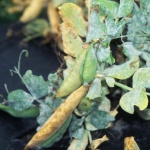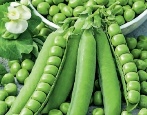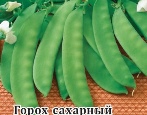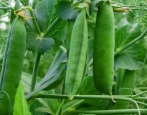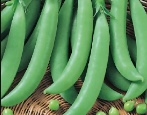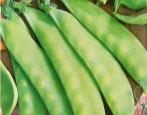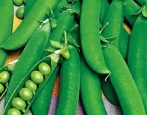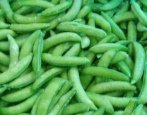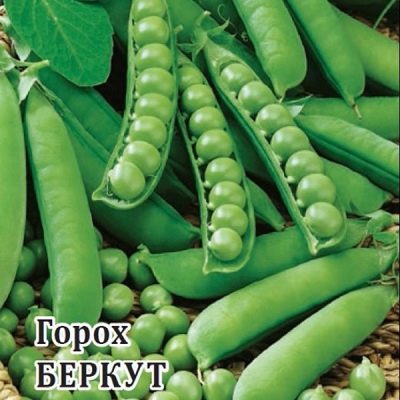
- Authors: Samarin N.A., Drozd A.M., Besedin A.G.
- Year of approval: 2002
- Ripening terms: mid-season
- View: peeling
- The period from germination to technical ripeness: 63-72 days
- Stem length, cm: 70-80
- Sheet: normal, medium-sized leaves, green with a waxy bloom
- Stipules: medium-sized with mottling
- Flowers: medium, white
- Parchment layer: available
Golden eagle is a pea variety bred by Russian breeders and approved for use in 2002. This is a peeling species that has its own advantages and disadvantages. Let's consider the features of the Golden Eagle in more detail.
Description of the variety
Golden eagle is a popular variety, the seeds of which can be purchased without any problems both in stores and on the Internet. The advantages include the long shelf life of the planting material - the seeds remain viable for 5-6 years, so they can be bought for several seasons in advance. This is a tall and disease-resistant plant that is recommended for growing in the North Caucasus region and the Central Black Earth Region. The only drawback is its height, which requires the use of a support.
Characterization of the appearance of plants, beans and seeds
The length of the stem reaches 70-80 cm, on it, on average, ordinary green leaves with a waxy bloom develop, there are medium-sized spotted stipules. White flowers form during flowering. The first beans are located 37-46 cm above the soil level, their shape is somewhat curved, the top is pointed, the pods are up to 10 cm long. At the stage of technical ripeness, the beans have a dark green color, each containing 9-10 yellow-green peas.
Purpose and taste
Berkut peas have a very good delicate taste. It is recommended to use them for food at the stage of milk ripeness. The beans can be eaten fresh, canned, frozen, added to salads, stews, soups, and other dishes.
Ripening terms
From the day of germination to harvest, 60-72 days pass, by which time the peas reach the stage of technical ripeness, which is typical for mid-season varieties. The beans ripen at the same time, so the harvest period is not extended.
Yield
On average, the Berkut variety brings 64-100 quintals per hectare, the yield of green peas from beans is 41-45%.
Growing and caring
Before sowing, pea seeds need to be prepared and sorted out. To do this, place the peas in a saline solution for a couple of hours, and then select those that have sunk to the bottom. The floating seeds are usually empty, they can be thrown away, and the selected peas must be washed and dried well, after which they can be planted.
The optimal time for sowing is April-May. Deepen the seeds by 4-6 cm and plant according to the 15x30 cm pattern. The Berkut variety will feel most comfortable in sandy loam or loamy soil in a garden bed located on the sunny side. Be sure to tie a plant that has grown to 20-30 cm to a support.
Use potassium salt or superphosphate as fertilizer and avoid using nitrogen-containing mixtures that negatively affect crop development. The plant is quite demanding for watering. It is especially important to water it regularly during the flowering period and the appearance of ovaries. For moistening, use warm, settled water, and direct the stream to the root. It is better to arrange irrigation in the evening, when the sun is no longer baking so well, otherwise the plant will get burns, especially since the moisture will not evaporate in the evening. It is recommended to combine watering and feeding.

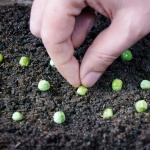
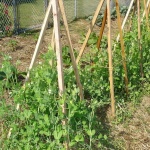

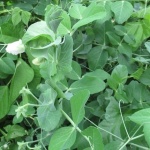
Disease and pest resistance
The Berkut variety is highly resistant to lodging, but even he is not immune from insects. So, the most common enemy is the leaf roll. To prevent the attack of this individual, promptly remove plant residues on the site, loosen the soil after watering, mix the plantings of peas and white mustard.
If insects nevertheless attacked the culture, then chemical compounds or folk remedies will help to stop them. So, the leaf roll will help to overcome the infusion of tomato tops, ground red pepper, infusion of garlic. If chemicals are still chosen to fight the pest, then use them before flowering.
